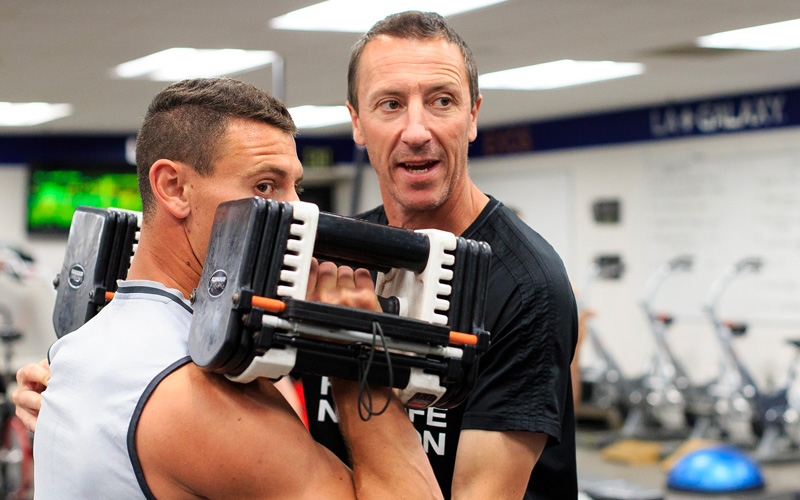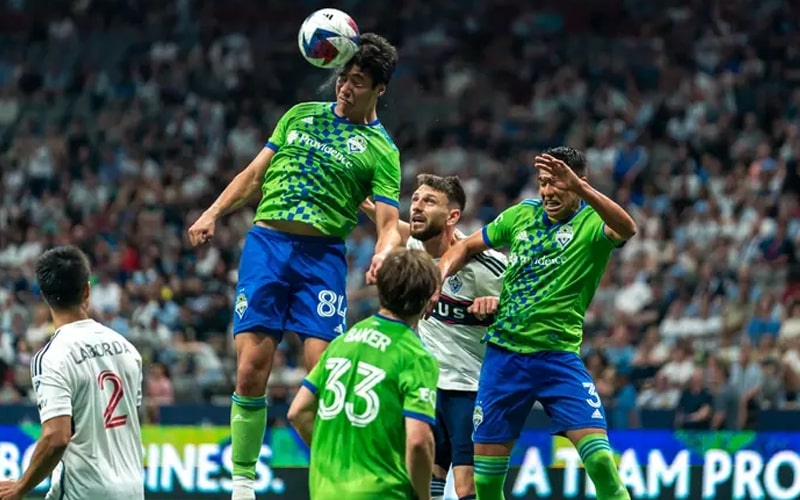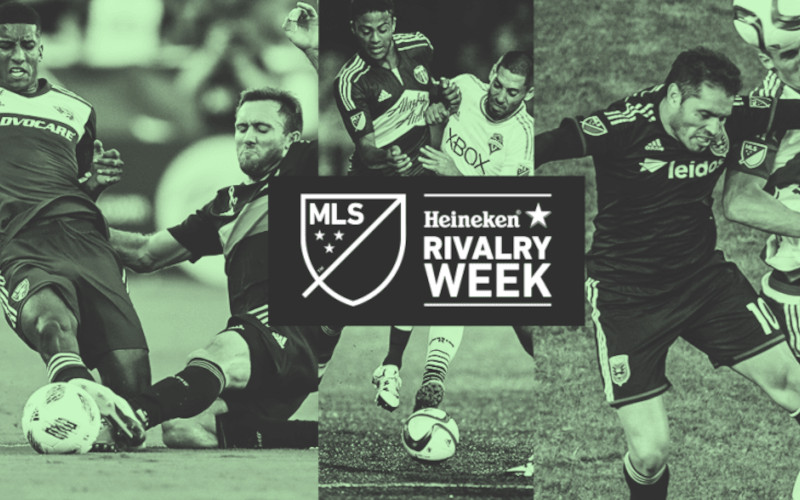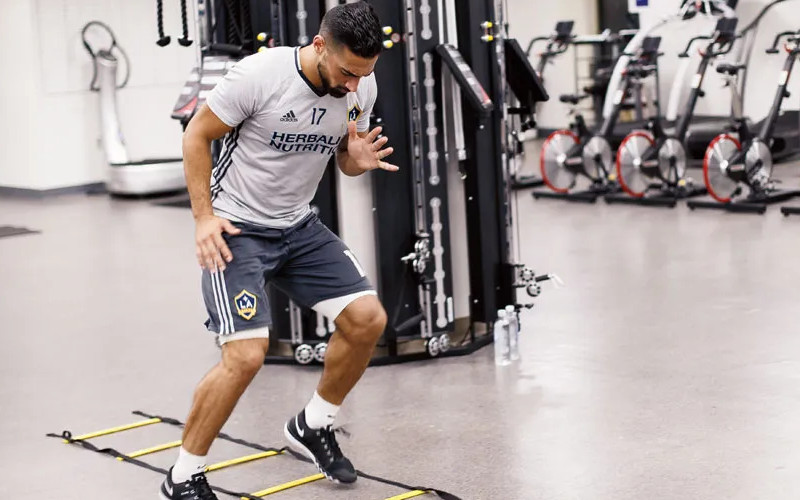Sports science has become an integral part of Major League Soccer (MLS) clubs’ operations in recent years. The application of cutting-edge technology, data analysis, and innovative training methods have transformed how teams prepare and perform on the pitch. The ultimate goal is to optimize player performance, reduce the risk of injury, and maximize recovery times.
Injury Prevention and Management in MLS
Injury prevention and management have become critical aspects of sports science for MLS clubs. Teams have invested heavily in state-of-the-art facilities and sports medicine professionals to ensure their players remain fit and healthy throughout the season.
One example of MLS clubs’ commitment to injury prevention is the Sports Medicine Symposium, an annual event that brings together medical professionals, coaches, and trainers from across the league to discuss best practices in injury prevention and player health. It showcases the latest research, technologies, and advancements in sports medicine related to soccer.
The Importance of Load Management
Load management has become a crucial aspect of injury prevention in MLS. This approach involves monitoring the physical demands placed on players during matches and training sessions and adjusting their workloads accordingly. By carefully managing players’ loads, clubs can reduce the risk of overuse injuries and ensure optimal performance levels.
Some MLS clubs use GPS technology, such as the StatSports Apex System, to track player movements and gather data on their physical output. This system allows clubs to monitor player workloads and identify potential injury risks.
The Role of Recovery Strategies
Recovery strategies have become another essential component of injury prevention in MLS clubs. Players endure a grueling schedule, with matches often occurring just days apart. To maintain optimal performance and ensure players recover quickly, clubs implement various recovery techniques, including cryotherapy, massage, and hydrotherapy.
For instance, the Columbus Crew SC has a dedicated recovery lab at their training facility. This lab includes a cryotherapy chamber, a float tank, recovery boots, and other specialized equipment designed to help players recover from the physical demands of matches and training sessions.
The Impact of Nutrition and Hydration in MLS
Proper nutrition and hydration play a vital role in player performance and injury prevention. MLS clubs recognize the importance of providing their athletes with the necessary fuel to perform at their best and recover from their exertions.
Many MLS clubs employ full-time sports nutritionists to work closely with players and coaching staff to develop individualized nutrition plans. These plans are tailored to each player’s specific needs and often include pre- and post-match meals, hydration strategies, and supplementation recommendations.
One example of a club prioritizing nutrition is Sporting Kansas City, which has a dedicated performance kitchen at its training facility. The kitchen provides players with nutritious meals and smoothies, ensuring they receive the appropriate nutrients for optimal performance and recovery.
Strength and Conditioning in MLS
Strength and conditioning programs are essential for overall player performance, injury prevention, and resilience. Many MLS clubs have dedicated strength and conditioning coaches who work closely with players to design and implement individualized training programs. These programs aim to improve players’ physical attributes, such as strength, power, speed, and endurance.
For instance, LA Galaxy has a sports science department that focuses on individualized strength and conditioning programs. This department uses various technologies, such as force plates and 3D motion capture analysis, to assess players’ physical capabilities and design effective training programs.
The Role of Injury Screening and Assessment
Regular injury screening and assessment are critical components of a comprehensive strength and conditioning program. MLS clubs invest in various screening tools and protocols to identify underlying issues or imbalances that could potentially lead to injury.
For example, the Seattle Sounders FC uses a Functional Movement Screen (FMS) to assess players’ movement patterns and identify any weaknesses or imbalances. This information helps the strength and conditioning staff to develop targeted training programs that address specific issues and reduce the risk of injury.
Sports Psychology and Mental Conditioning in MLS
Mental conditioning and sports psychology have become increasingly important to MLS clubs. A strong mental game can give players a competitive edge and help them maintain focus and composure under pressure. Clubs have started to incorporate sports psychologists and mental conditioning coaches into their staff to address the mental aspects of performance.
For instance, Toronto FC employs a sports psychologist to work with players, helping them with mental preparation, goal setting, and coping strategies for high-pressure situations. Developing the mental aspect of performance is an essential component of a comprehensive sports science program in MLS clubs.
Sleep and Recovery in MLS Players
Sleep plays a crucial role in player recovery, performance, and overall health. Adequate sleep allows the body to recover from intense physical exertion and helps improve cognitive function and decision-making on the pitch. Many MLS clubs have recognized the importance of sleep and have begun to implement sleep strategies to ensure players get adequate rest.
For example, the Portland Timbers work with a sleep and performance consultant to develop sleep protocols for their players. These protocols address factors such as sleep environment, travel schedules, and sleep education to help players achieve optimal sleep and recovery.
Developing Young Talent: Academies and Sports Science
MLS clubs are increasingly incorporating sports science into their talent development programs as well. By applying sports science principles to their academies, clubs can help young players build a strong foundation, reduce the risk of injuries, and optimize their development.
For instance, the Philadelphia Union has integrated sports science into its youth academy, focusing on areas such as strength and conditioning, nutrition, and performance analysis. By emphasizing sports science principles in their development programs, MLS clubs can better prepare young players for the demands of professional soccer.
Collaborative Approach to Sports Science
To stay at the forefront of sports science, many MLS clubs are adopting a collaborative approach. This approach involves working closely with other teams, experts, and researchers to share knowledge and best practices. Through collaboration, MLS clubs can be more effective in implementing sports science strategies and staying ahead of the competition.
An example of this collaborative approach is the annual MLS Medical Symposium mentioned earlier. This event serves as a platform for sharing ideas, research, and experiences among medical professionals, coaches, and trainers in the league.
The Role of Artificial Intelligence and Data Analysis
The use of artificial intelligence (AI) and data analysis in sports science is a rapidly growing area. As more data becomes available through wearable technology and other tracking systems, AI can help analyze this data to identify patterns, make predictions, and optimize training and recovery.
For example, some MLS clubs have started to integrate AI-powered analytics platforms, such as Wyscout and Instat, into their analysis workflows. These platforms use AI to analyze vast amounts of data, providing valuable insights into player performance, injury risk, and tactical trends.
By leveraging AI and data analysis, MLS clubs can make more informed decisions regarding player management, training, and match preparation.
The Future of Sports Science in MLS
The role of sports science in MLS clubs’ operations will continue to grow in the coming years. As technology and research advance, MLS clubs will continue to implement new and innovative methods to optimize player performance, prevent injuries, and promote overall player health.
One area ripe for development is the use of wearable technology and data analytics in match preparation and recovery. Additionally, MLS clubs are likely to collaborate more closely with sports science researchers, universities, and other organizations to gain insights into the latest developments in sports medicine, nutrition, and training methodologies.
In conclusion, sports science has become an integral part of MLS clubs’ operations, with injury prevention, recovery strategies, nutrition, and strength and conditioning being key areas of focus. As the league continues to grow and evolve, clubs will continue to invest in cutting-edge technology and research to further enhance player health and performance.




